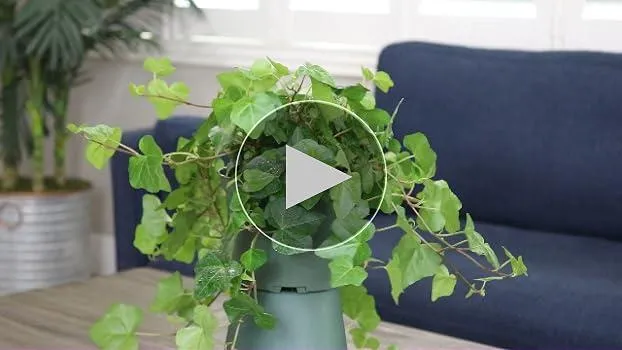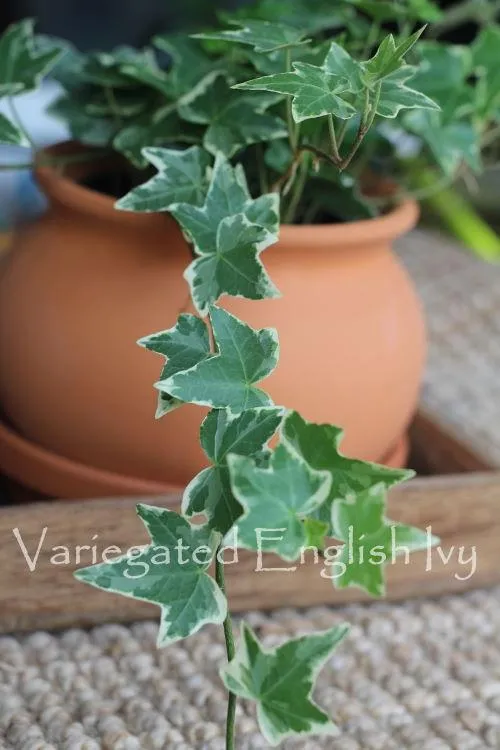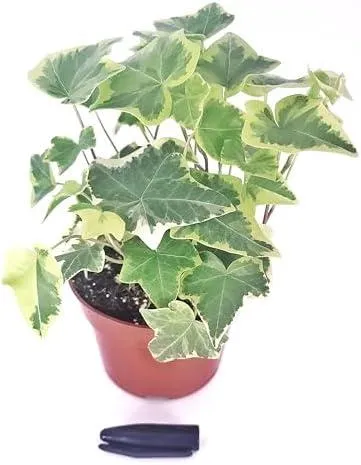A Complete Guide to English Ivy Plant Care
If you’re looking for an easy-to-grow, low maintenance plant that can thrive indoors or outdoors, English ivy is a great option. As one of the most popular houseplants, English ivy (Hedera helix) has beautiful glossy leaves and versatile growth habits. In this guide, I’ll cover all the basics of English ivy care so you can keep your plant happy and healthy.
Watering English Ivy
Proper watering is key to keeping your ivy thriving. As a rule of thumb, allow the top inch of soil to dry out between waterings. Feel the soil with your finger to check moisture level. Watering when the soil is dry prevents root rot caused by overwatering. From my experience, English ivy prefers slightly drier conditions rather than constantly moist soil.
During winter when growth slows, reduce watering frequency. An occasional thorough watering every 2-3 weeks should suffice. In spring and summer when your ivy is actively growing, water around once a week or when the top soil becomes dry. Make sure the drainage holes in the pot allow excess water to drain out.
Light Requirements
While English ivy can tolerate low light, it grows best in bright, indirect light. Direct hot sunlight may scorch the leaves. Position your plant in an east, west or north facing window to get optimal light conditions. You can also keep it in medium light areas at least 6 feet away from the window if direct sun is not available.
Ivy thrives under fluorescent tube lights as well. If keeping indoors, supplement natural light with grow lights for at least 6 hours daily during fall and winter. Insufficient light will cause leggy, sparse growth.
Soil and Fertilizer
Ivy prefers well-draining, organic potting mixes. A good quality, general purpose potting soil blended with perlite or coarse sand works well. Repot yearly in early spring into a container just 1-2 inches larger to allow room for growth.

- In spring and summer, fertilize monthly with a dilute water-soluble houseplant fertilizer.
- Stop fertilizing by late summer to encourage hardening before winter dormancy.
- Feed again starting in late winter as new growth emerges.
Avoid over-fertilizing which can damage ivy’s root system. Never fertilize when the plant is stressed. Well-draining soil and moderate feeding is the key to strong, healthy growth.
Pruning and Trimming English Ivy
Ivy sends out aerial roots that allow it to cling onto surfaces. You can train your plant to climb a moss pole, trellis or let it cascade from a hanging basket. Regular pruning maintains an attractive shape and encourages bushier growth.
In early spring, remove any dead or damaged stems back to a healthy bud or leaf node. You can also trim branches to control size and shape as desired. Ivy propagates easily from stem cuttings, so collect trimmed pieces for starting new plants! Generally avoid heavy pruning which can shock the plant.
Pests and Diseases
English ivy is relatively low maintenance but occasionally faces issues like spider mites, scale and mealybugs. Some plants I’ve owned developed powdery mildew in shady areas.
My top tips to prevent pest problems:
- Quarantine new plants for a few weeks before introducing into your collection.
- Practice good sanitation and remove any infected leaves or stems immediately.
- Minimize stress from overwatering or underwatering which makes plants susceptible.
- Spray neem oil or insecticidal soap every 7-10 days as a preventative measure.
For established infestations, seek commercial insecticides tailored to the specific pest. As a last resort, remove severely infected parts if saving the plant. Proper care goes a long way in keeping English ivy bug-free.

Dormancy and Winter Care
Outdoors, ivy naturally goes dormant in fall when nights get cooler. Prior to first frost, move container plants to a protected spot and trim back any frost-prone top growth.
Indoors, mimic dormancy by reducing water and fertilizer, minimizing direct light and dropping night temperatures to around 55-60°F. Give your ivy short “winter days” of 8 hours light to trigger dormancy. Resume normal care as new growth emerges in late winter or early spring.
Avoid drastic temperature fluctuations which can cause leaf drop. English ivy is fairlywinter hardy down to zone 6 once established. So you can often leave outdoor plants in place with minimal protection if temperatures don’t drop below 15°F.
Plant Propagation
Want to expand your ivy collection? Cuttings from mature vines root very easily in water or moist soil. Simply remove 4-6″ stem sections, remove lower leaves and place stems in water. Within 2-4 weeks develop roots for planting in potting mix. You can also start ivy from stem or leaf cuttings taken in late winter.
Softwood cuttings taken in spring and early summer have higher success rates than hardwood cuttings taken in fall. Either way, maintain humid conditions until rooted. What better way to enjoy English ivy than nurturing baby plants of your own! Just be prepared – propagating means more ivy to care for long term.
I hope this guide has covered all you need to know about caring for your beloved English ivy. Proper watering, light, soil and occasional pruning are key to a thriving indoor or outdoor plant. With basic care, ivy can flourish for many years. Happy planting!

English Ivy Plant Care
| Light Requirements | Bright, indirect sunlight. Ivy grows well near east or west-facing windows. |
|---|---|
| Water Requirements | Keep soil evenly moist. Water whenever top inch of soil becomes dry. Do not overwater. |
| Humidity Requirements | High humidity preferred. Mist leaves occasionally if humidity is low. |
| Temperature Requirements | Thrives between 60-75°F. Avoid cold drafts which can cause leaf drop. |
| Pruning | Pinch back new growth in spring to encourage bushiness. Prune any damaged or diseased leaves. |
| Fertilizing | Feed monthly in spring and summer with a houseplant fertilizer diluted by half. |
| Propagation | Propagate by stem cuttings in water or moist soil in spring or early summer. |
FAQ
-
How do I plant english ivy?
English ivy grows basically anywhere. You want soil that drains well so the roots don’t get soggy. Dig a hole, put the plant in, cover the roots with soil, and water well. Then kind of wait for it to spread out. It’ll send little roots all over the place and grow super fast!
-
How do I care for an english ivy plant?
Ivy is pretty easy to look after. Water when the soil seems dry, which might be once a week depending on your climate. You can even just stick the plant outside when it’s nice – it’ll be fine in full sun or partial shade. Fertilize in spring and summer if you want it to grow like crazy. Prune if it gets scraggly looking. Pretty low maintenance if you ask me!
-
Does english ivy need lots of sunlight?
While english ivy can technically tolerate low light, it will grow better and be healthier with at least partial sun each day. It may struggle and become leggy in very shady spots. However, too much direct sun can also cause burn or drop leaves. English ivy seems happiest with morning or afternoon sun but shade from the harshest midday rays. Finding that golden mean of light exposure is key to growing lovely ivy, or so the experts say!
-
How do I get english ivy to grow up a wall?
Just put the ivy at the base of where you want it to climb and wait. English ivy has these awesome tiny pads that almost suction onto whatever surface they touch. As long as there’s something for the ivy to grab onto like cracks in brick or spaces between boards, it’ll sort of shimmy its way up inch by inch. You can also use green garden string or wire for the ivy to climb. Eventually it may totally cover your wall – talk about gorgeous green!
-
Can english ivy be grown indoors?
Sure, english ivy does great as a houseplant too. Put it in a hanging basket or pot, find a spot with indirect light like a north window, and water when the soil becomes dry. You’ll need to prune it occasionally to keep it bushy. And dust the leaves now and then since they collect dust easily inside. With the right care, your ivy can decorate your home for years while cleaning the air too!
-
Is english ivy poisonous?
All parts of english ivy contain compounds that are potentially toxic if enough is eaten. However, toxicity is basically low except in large doses. Ivy berries can pose the biggest risk to small kids or pets who decide to munch them. Overall english ivy is generally considered non-toxic in small amounts for those not allergic. But I wouldn’t advise gobbling down handfuls. Maybe just stick to admiring its lush greenery from afar if you’re paranoid like me!

-
What pests affect english ivy?
Luckily ivy doesn’t tend to attract many major pests. You might find some sap-sucking insects like aphids or scale every now and then. Squash those guys promptly with soapy water to stop infestations. Beyond occasional bug visits, slugs and snails could chew holes at ground level. Put down iron phosphate pellets and cross your fingers. With some TLC your ivy should stay fairly pest-free and you can enjoy it for seasons to come!
